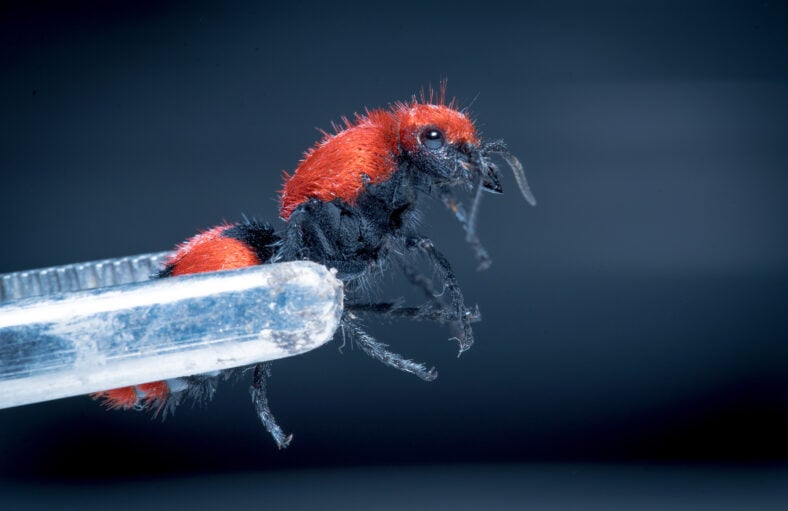Researchers Set Out To Investigate Why The Scarlet Velvet Ant’s Sting Is So Painful

In the animal kingdom, scarlet velvet ants are known to deliver some of the most excruciatingly painful stings. These insects live on the ground, but they are not actually ants at all. Instead, they are a type of wingless parasitic wasp.
Its venom is painful to all kinds of creatures, including mammals, birds, reptiles, and amphibians. In 2016, the entomologist Justin Schmidt described a velvet ant sting as akin to getting hot oil from the deep fryer spilled on your hand.
Velvet ants don’t just have venom to protect themselves from predators. They also have a warning coloration and odor, as well as a super tough exoskeleton. They can even “scream” in the face of danger.
However, the insect’s powerful sting, in particular, suggests that it once had many predators to defend against. Such an ability is quite rare among animals, so researchers wanted to investigate how the velvet ant’s sting works and why it is so painful to a wide range of creatures.
“If you’re trying to defend against many predators, then it would make sense for the venom to be generally effective by targeting something pretty ancient,” said Lydia Borjon, a sensory neurobiologist from Indiana University Bloomington.
“Ultimately, what we found was different and surprising.”
The research team collected several samples of the venom and analyzed the 24 peptides it contains. In the past, research has shown that peptides in venoms are responsible for the symptoms of pain caused by stings.
The researchers created synthetic versions of each peptide to learn more about them. Then, they tested the peptides by injecting them individually into fruit flies and mice.
They discovered that the velvet ants’ venom is so potent because it contains different peptides for different victims. That means not every species experiences the same level of pain from velvet ant stings.

Sign up for Chip Chick’s newsletter and get stories like this delivered to your inbox.
For example, there was one peptide called Do6a that was effective in fruit flies. In addition, some creatures like mammals get dosed with twice the amount of pain due to two peptides—Do13a and Do10a.
Overall, the findings demonstrate that some creatures were probably more of a threat to velvet ants than others, so they tailored their peptides based on their target. The study is one of the first to prove that a single venom has “multiple modes of action.”
The researchers concluded their work by suggesting that this information is just scratching the surface. It seems likely that many species have this ability to inflict pain on other creatures.
They just have not yet been identified because there is very little incentive for scientists to test the effects of venoms in different creatures.
The details of the study were published in the scientific journal Current Biology.
More About:News